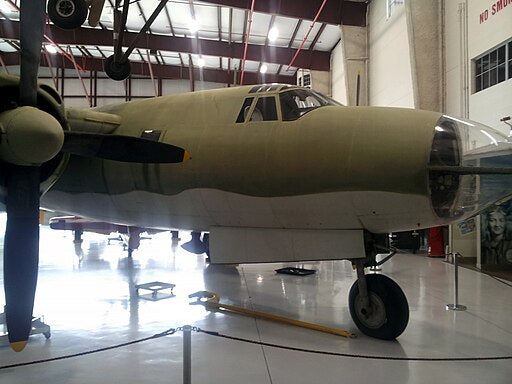Few aircraft in military aviation have carved out a legacy quite as remarkable as the B-26 Marauder. A testament to engineering prowess and battlefield resilience, these medium bombers played a pivotal role in the aerial campaigns of World War II. Today, a select few have found their final resting places in museums around the globe, serving as silent guardians of history and telling the stories of those who flew them in times of conflict. Below, we will explore the remarkable trajectory of the remaining B-26 Marauders, from their high-stakes missions over enemy territory to their current status as treasured aircraft.
The Historical Significance of the B-26 Marauder
Designed and built by the Martin Company in the closing years of the 1930s, the B-26 Marauder rapidly made a name for itself as a powerhouse in the aerial domain. Brimming with weaponry and boasting an impressive turn of speed, this aircraft became a vital asset in the Allies’ arsenal, undertaking critical missions across the European and Pacific battlefronts. Despite facing early criticism for its handling characteristics, the Marauder ultimately silenced naysayers through its impressive combat performance and durable design, earning the respect of pilots and ground crew alike.
Navigating the Challenges of Preservation
Transitioning from the rigors of warfare to the serenity of museum displays is a journey fraught with challenges for any aircraft, and the B-26 Marauder is no exception. As the years have rolled on and original components have become harder to come by, safeguarding the legacy of these venerable bombers has transformed into an intricate labor of love. It’s a task that calls for endless passion and commitment from a diverse group of individuals, ranging from die-hard aviation buffs and scholars of history to skilled restoration specialists. United by a common goal, these dedicated souls pour their energy into ensuring that these treasured fragments from yesteryear are kept in pristine condition, allowing future generations to admire, understand, and draw lessons from them.
The Art and Science of Restoration
Restoring a B-26 Marauder is as much an art as a science, demanding a deep understanding of the aircraft’s original design and meticulous attention to detail. Restoration teams pour over historical documents, photographs, and blueprints, striving to recreate the aircraft as faithfully as possible. Every rivet, panel, and piece of wiring is scrutinized and, when necessary, crafted anew to adhere to the strictest standards of authenticity.
The Legacy Lives On: B-26 Marauders in Museums
Today, the B-26 Marauders that grace museums worldwide are potent reminders of a tumultuous chapter in world history. These aircraft stand as rich reservoirs of knowledge, shedding light on the technological leaps and bounds of their time, the complex strategies that defined air combat, and the relentless determination of the servicemen and women. For those who visit, it’s a unique chance to touch history, fostering profound gratitude for the sacrifices endured and the formidable obstacles surmounted by those of a previous generation.
Conclusion
From their daring missions over war-torn landscapes to their meticulously preserved resting places in museums, the B-26 Marauders have traversed a remarkable journey through time. These aircraft, once instruments of war, now serve as invaluable educational resources and poignant tributes to the resilience of the human spirit. The remaining B-26 Marauders, through their silent testimony, continue to inspire and educate, ensuring that the legacy of those who flew them lives on for generations to come.
For more insights into the B-26 Marauder and other important military aircraft, visit Aces In Action. Here, you’ll find an amazing piece of artwork by Craig Tinder titled “Clearing the Path to Utah,” which illustrates the tribute to the pilots and crews of the 394th Bombardment Group during 6 June 1944, D-Day. The limited edition canvas print includes a piece of original aluminum fragment from B-26F 42-96263 “Spook,” which took off from RAF Boreham at 5:05 am on 6 June 1944, making it a unique piece of history!
Clearing the Path to Utah – B-26 Marauder Aviation Art by Craig Tinder
6 June 1945 – In support of the Allied invasion of D-Day, American B-26 Marauders from the 394th Bombardment Group, 587th Bombardment Squadron take heavy flak as they approach the shores of Utah Beach. B-26s from Formation Box III set course for the gun battery at Saint-Martin-de-Varreville in Normandy just before the invasion landings. After a successful bombing run, all of the squadron’s aircraft returned from the mission that day except for two, which were lost in an accident just after takeoff.






Share:
TBM Avenger Legacy: Grumman, General Motors, and World War II Mobilization
Orange or White? The Evolution of the Space Shuttle’s Fuel Tank Color